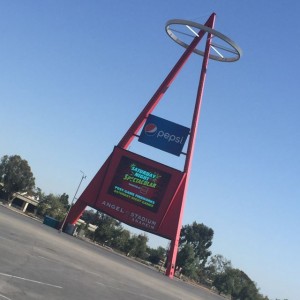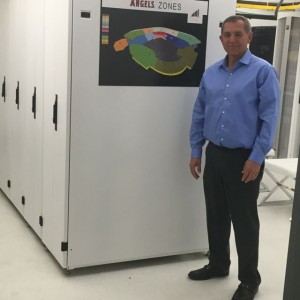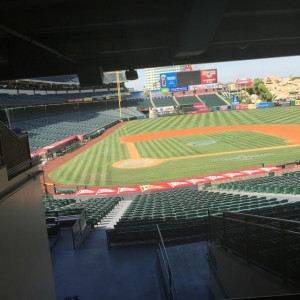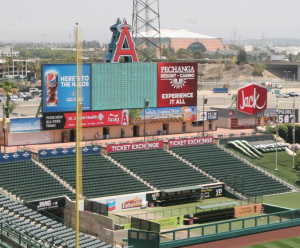Editor’s note: The following team-by-team capsule reports of MLB stadium technology deployments are an excerpt from our most recent Stadium Tech Report, THE BASEBALL (And Soccer!) ISSUE. To get all the capsules in one place as well as our featured reports, interviews and analysis, download your free copy of the full report today.
AL West
Reporting by Paul Kapustka
Los Angeles Angels of AnaheimAngel Stadium of Anaheim
Seating Capacity: 45,050
Wi-Fi – Yes
DAS – Yes
Angel Stadium is now fully wired for Wi-Fi and DAS, courtesy of integrator 5 Bars, which used Wi-Fi gear from Ruckus Wireless and DAS gear from JMA Wireless.
Houston Astros
Minute Maid Park
Seating Capacity: 40,963
Wi-Fi – Yes
DAS – Yes
The Houston Astros were one of the beneficiaries of MLB’s program to bring updated Wi-Fi to all stadiums. The new network was scheduled to be live for the 2015 season.
Seattle Mariners
Safeco Field
Seating Capacity: 47,476
Wi-Fi – Yes
DAS – Yes
Finally, geeks of all stripes in Seattle can stay connected while at Safeco, thanks to a new Wi-Fi network with 560 access points that is scheduled to be live for the 2015 season. New LED lighting for the field should make it easier to watch games through the rain and mist.
Oakland A’s
O.co Coliseum
Seating Capacity: 35,067
Wi-Fi – Yes
DAS – Yes
With Wi-Fi already in place the Oakland A’s spent $10 million in the offseason to upgrade the video boards in aging O.co Coliseum. The two new HD Daktronics screens, 36 feet high and 145 feet wide, were joined by new ribbon LED boards to bring more info to fans.
Texas Rangers
Global Life Park in Arlington
Seating Capacity: 48,114
Wi-Fi – Yes
DAS – Yes
The team isn’t talking about it publicly yet, but according to MLBAM there is now a working Wi- Fi network and a DAS at Global Life Park in Arlington, one of the latest beneficiaries of the MLB program to bring Wi-Fi to all MLB parks.










